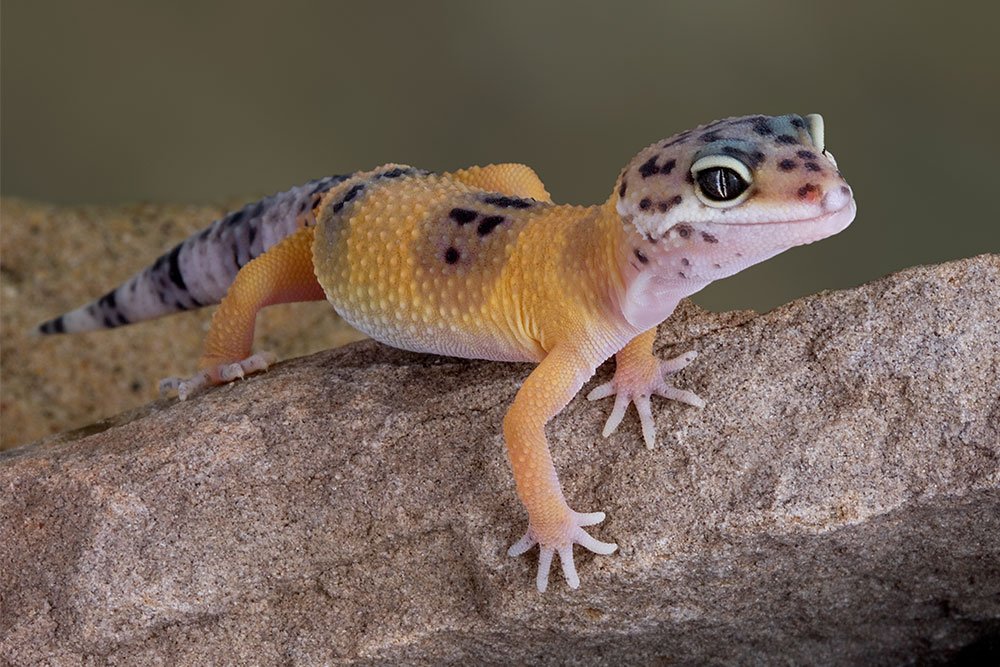Our Leopard Geckos are captive bred in the USA and they are one of the most popular reptile pets because they are calm, very hardy, and come in a wide variety of morphs. They have a life span of 15-18 years and can grow a length of 7-9 inches. Unlike some other geckos, Leopard Geckos are able to open and close their eyes. Leopard Geckos are active during dusk and dawn hours. Adults become very docile and are easy to breed. Leopard Geckos do shed their skin and their tails are fragile so be careful when you hold them. If there is an accident and the gecko “drops” its tail, it will grow back.

Enclosure
A 10-gallon terrarium with a screen top is recommended for one Leopard Gecko. When housing two or more together, a 20-gallon long terrarium is needed. The ideal group is all females or one male and one or two females. Males should be housed separately.
Substrate
Use sand substrate or potting soil mixture for your substrate.
Habitat
Decorate the Leopard Gecko terrarium with non-toxic plants, branches, logs, cork bark, and caves. Include small hiding places for your gecko. Also include dampened sphagnum moss under the hiding spot to help aid healthy shedding and to keep them hydrated.
Temperature and Lighting
Temperature during the day should be kept around 80-82° F with a warm area of 82-90° F at one end of the enclosure. Night temperature can be as low as 75-82° F. Humidity level should be kept low outside of the hiding spot. Keep the hiding spot around 80° F. We recommend an under tank heater for controlling the cage temperature as these nocturnal geckos do not typically bask under a heat lamp. Leopard Geckos need 10-12 hours of light per day. They are nocturnal, so they do not require UVB lighting.
Food and Water
Provide clean, fresh, chlorine-free or spring water in a shallow bowl that cannot be tipped over. Feed your Leopard Gecko every two to three days. Juvenile Leopard Geckos will eat small crickets and mealworms daily. The juveniles will eat medium-sized crickets, mealworms and wax worms. Adults will eat large crickets, wax worms, mealworms, and pinkie mice. Dust crickets lightly with vitamins and powdered calcium supplement every other feeding. Juvenile Leopard Geckos should be lightly misted twice weekly to help them shed their skin.

